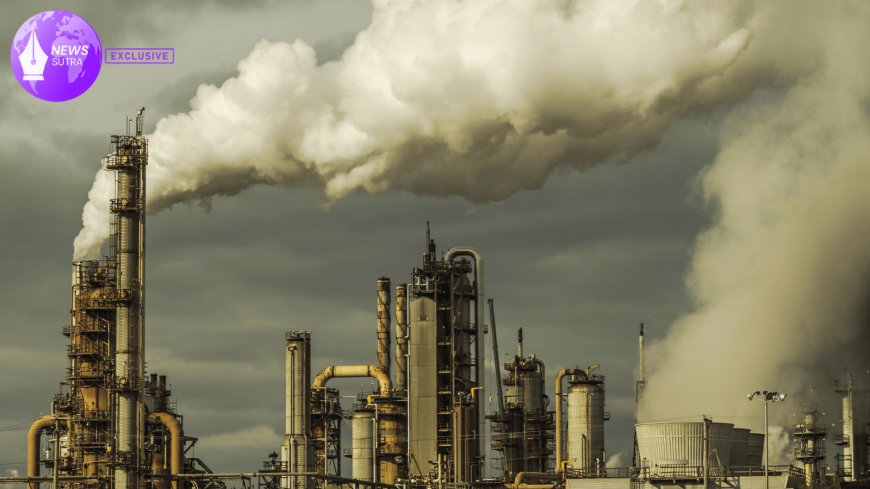Silent Suffering: How Oil and Gas Air Pollution Is Affecting 90,000 U.S. Families
Over 90,000 U.S. families face health risks from oil and gas air pollution. Explore personal stories, pollution maps, and grassroots responses.

In communities across the United States, the invisible cost of oil and gas production is carried not by corporations, but by families living in its shadow. While industry reports highlight energy independence and job creation, the reality for nearly 90,000 families living near oil wells, refineries, and compressor stations is far more personal: breathing air laced with toxins that shorten lives, aggravate asthma, and increase cancer risks.
Unlike broad policy debates, these stories come from living rooms and hospital wards in rural Texas, Pennsylvania, and Colorado—regions where pollution maps align with personal tragedies. This article weaves together scientific data, geospatial mapping, and the voices of families left fighting for clean air.
The Human Toll Behind the Numbers
For many, the statistics are staggering. Studies from the Harvard T.H. Chan School of Public Health have linked oil and gas emissions to thousands of premature deaths annually. Nitrogen oxides, volatile organic compounds (VOCs), and fine particulate matter (PM2.5) seep into neighborhoods, forming smog and worsening respiratory illnesses.
Take the case of the Morales family in West Texas. Their son, Carlos, once a promising soccer player, now struggles with severe asthma attacks. His mother recalls rushing him to the emergency room during high-ozone days, when the smell of gas hangs heavy in the air. “We can’t afford to move,” she said. “But staying feels like slowly poisoning him.”
In Colorado’s Weld County, the Petersons buried their father at 63—years before his time. Doctors traced his aggressive lung disease to prolonged exposure to benzene, a common byproduct of fracking operations. Stories like these are echoed thousands of times over in towns that rarely make national headlines.
Geospatial Mapping Reveals Hotspots
Researchers and community advocates are turning to geospatial mapping to draw clearer connections between industrial zones and health outcomes. Interactive maps highlight counties with disproportionately high rates of respiratory illness and premature mortality.
For example:
-
Texas’ Permian Basin shows elevated levels of ozone and fine particulate matter, correlating with hospital admissions.
-
Southwestern Pennsylvania, where shale gas extraction has boomed, now reports childhood asthma rates nearly 25% above the national average.
-
Southern California’s Los Angeles Basin, home to thousands of drilling sites near neighborhoods, has documented higher cancer risks from benzene exposure.
These data-driven visuals provide evidence long felt anecdotally by residents—that geography often dictates health when oil and gas infrastructure dominates the landscape.
The Science: Why Oil and Gas Emissions Are So Deadly
Air pollution from oil and gas facilities is not just about bad smells or smoggy skies. The health effects are cumulative and insidious.
-
PM2.5 (fine particulate matter): Tiny particles that lodge deep in the lungs, linked to strokes, heart disease, and premature death.
-
Nitrogen oxides (NOx): Contribute to ozone formation, aggravating asthma and reducing lung function in children.
-
Benzene and formaldehyde: Carcinogens that increase risks of leukemia and other cancers.
When these pollutants mix with sunlight and weather patterns, their reach can extend far beyond drilling pads, affecting entire regions.
Community Stories and Grassroots Resistance
Local families are not just victims—they are increasingly advocates.
-
In Texas, a group of parents formed “Mothers for Clean Air,” pushing for stricter state monitoring.
-
In Pennsylvania, church congregations have joined forces to demand health impact studies before new drilling permits are issued.
-
In Colorado, neighborhood groups succeeded in pressuring local officials to impose setbacks—buffer zones between drilling sites and homes.
These grassroots movements reflect a growing recognition: that the health of rural families should weigh as heavily in policy debates as corporate profit margins.
Economic and Policy Crossroads
Industry voices argue that oil and gas remain critical for economic stability and national energy independence. Yet the trade-offs are becoming harder to ignore. A report from the Environmental Defense Fund (EDF) estimated that health damages from air pollution linked to oil and gas cost the U.S. economy over $77 billion annually.
Meanwhile, policymakers are split. Some state legislatures have doubled down on deregulation, while others are crafting stricter environmental protections. At the federal level, debates over methane regulations and emissions caps continue to stall in partisan gridlock.
The Path Forward
Experts suggest several pathways to mitigate harm:
-
Stricter Emission Controls – Enforcing limits on methane leaks and VOC releases from oil and gas facilities.
-
Investment in Monitoring Technology – Real-time sensors to track air quality in vulnerable communities.
-
Healthcare Support – Expanding access to specialized clinics in rural pollution hotspots.
-
Transition to Renewables – Reducing reliance on fossil fuels in favor of cleaner energy alternatives.
Dr. Emily Harris, a public health researcher at Johns Hopkins, put it bluntly: “Energy production should not come at the expense of children’s lungs. The science is clear, and the solutions exist—it’s a matter of political will.”
Conclusion
Behind every dataset and pollution map is a family struggling with inhalers, hospital bills, and unspoken fears about the future. The 90,000 families living under the shadow of oil and gas pollution represent not only a public health crisis but also a test of America’s priorities.
Do we value energy output above human health—or can we chart a path where communities are no longer collateral damage? As the debate continues, the voices of these families remind us that clean air is not a privilege. It is a right.











